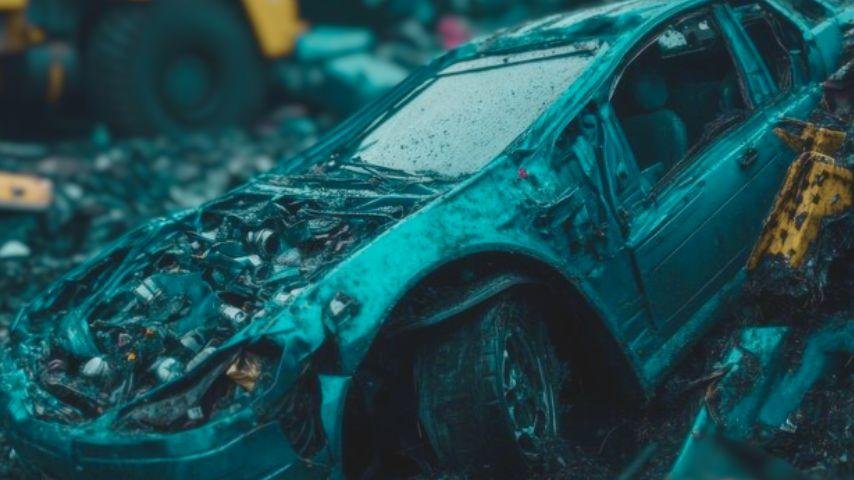The concept of scrap technology has been around for decades, but it has evolved significantly over the years. In the early days, the automotive industry primarily focused on the mass production of new vehicles, with little consideration for the fate of old and discarded ones. These vehicles were often sent to junkyards or landfills, where they would sit and deteriorate, contributing to environmental pollution and waste.
The Benefits of Transforming Old Vehicles
The transformation of old vehicles into new opportunities offers a range of benefits, both for the automotive industry and the broader economy. One of the primary advantages is the economic value that can be extracted from these discarded vehicles.
Through the use of scrap technology, companies are able to recover a wide range of materials, including metals, plastics, and rubber, which can then be sold or repurposed for use in other industries. This not only generates revenue for the automotive industry but also creates new business opportunities for companies involved in the recycling and repurposing of these materials. https://carremovaladelaide.com.au/
The Process of Transforming Old Vehicles
The process of transforming old vehicles into new opportunities is a complex and multi-faceted one, involving a range of specialized techniques and technologies. The first step in this process is the collection and dismantling of the vehicles, which is typically carried out by specialized scrap yards or recycling centers.
These facilities use a range of equipment and techniques to systematically dismantle the vehicles, separating the various components and materials. This includes the extraction of valuable metals, such as steel, aluminum, and copper, as well as the recovery of plastics, rubber, and other materials that can be repurposed or recycled.
Once the materials have been extracted, they are then processed and refined to remove any contaminants or impurities. This may involve processes such as shredding, melting, or chemical treatment, depending on the nature of the material and its intended use. The refined materials can then be sold to other industries or used in the production of new products, such as automotive parts, construction materials, or consumer goods.
Innovative Uses for Scrap Materials
The transformation of old vehicles into new opportunities has also led to the development of a range of innovative uses for the scrap materials. One of the most exciting applications is the repurposing of these materials for the production of new vehicles, particularly in the growing electric vehicle (EV) market.
For example, the lithium-ion batteries used in many EVs can be reclaimed from old vehicles and repurposed for use in new battery packs. This not only reduces the environmental impact of battery production but also helps to lower the cost of EVs, making them more accessible to consumers. Similarly, the metals and plastics extracted from old vehicles can be used in the production of new vehicle components, reducing the need for virgin materials and contributing to a more sustainable automotive industry.
Challenges and Limitations of Scrap Technology
While the evolution of scrap technology has undoubtedly brought about numerous benefits, it is not without its challenges and limitations. One of the primary challenges is the complexity of the materials found in modern vehicles, which can make the extraction and recycling process more challenging and costly.
Many modern vehicles incorporate a wide range of materials, including advanced composites, specialized plastics, and complex electronic components. Extracting and repurposing these materials can require specialized equipment and expertise, which can increase the overall cost of the scrap technology process. Additionally, the rapid pace of technological change in the automotive industry can make it difficult for scrap technology companies to keep up with the evolving material composition of vehicles.
The Future of Scrap Technology
Despite the challenges and limitations, the future of scrap technology in the automotive industry looks increasingly promising. As the world becomes more conscious of the importance of sustainability and environmental conservation, the demand for innovative solutions that can reduce waste and promote a more circular economy is only likely to grow.
One of the key drivers of this growth is the continued development of new technologies and processes that can make the extraction and repurposing of scrap materials more efficient and cost-effective. This includes the use of advanced sorting and separation techniques, as well as the development of new materials and manufacturing processes that are designed with recycling and repurposing in mind. https://carremovaladelaide.com.au/cash-for-cars-adelaide/
Conclusion:
The evolution of scrap technology in the automotive industry represents a significant step forward in the quest for a more sustainable and environmentally responsible future. By transforming old and discarded vehicles into new opportunities, the industry is not only reducing waste and minimizing its environmental impact but also creating new economic opportunities and driving innovation.



More Stories
Ace Your Theory and Practical Driving Tests
What Makes Driving Courses Effective?
Custom Printed Bakery Boxes For Your Brand